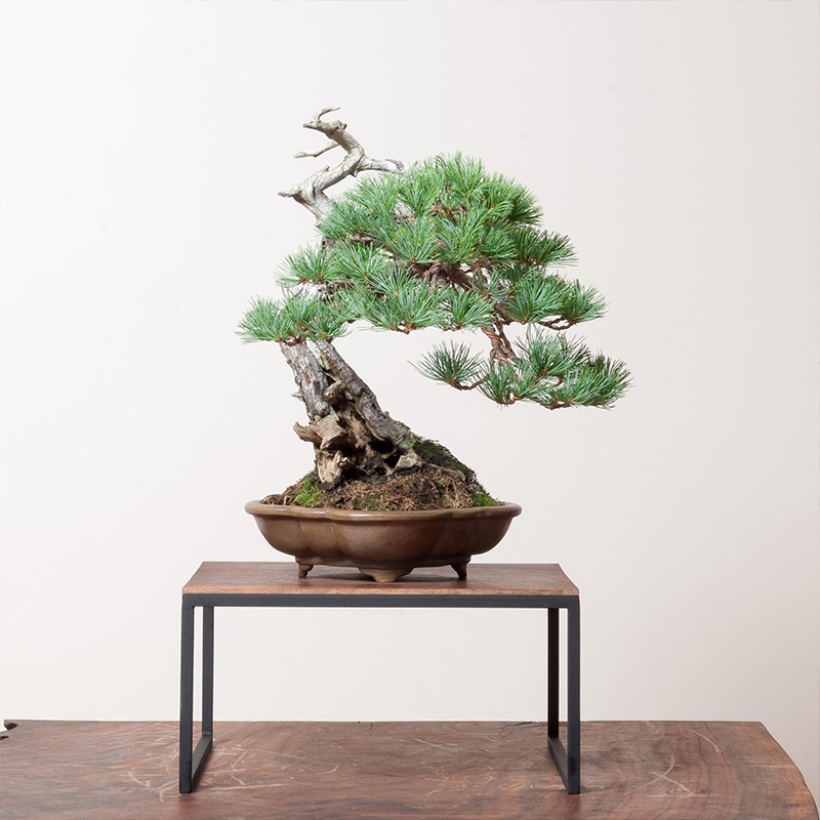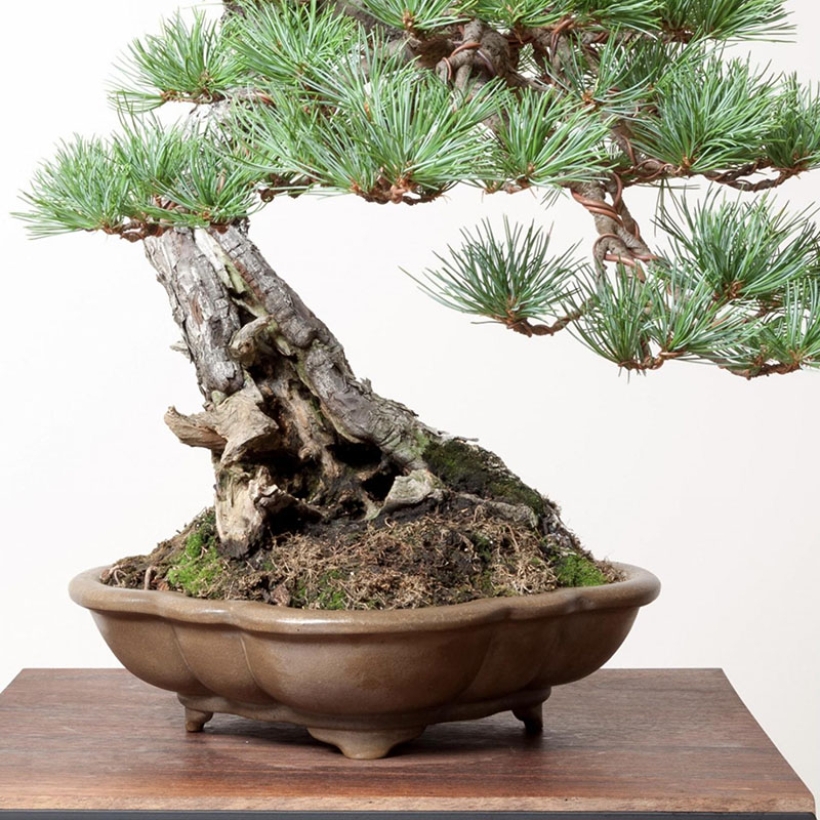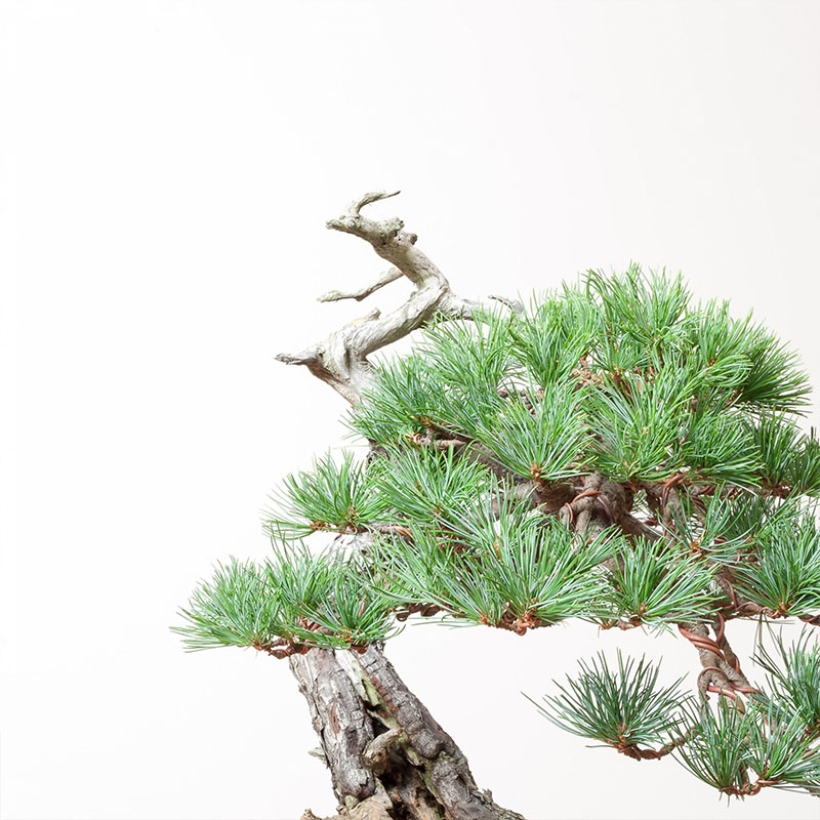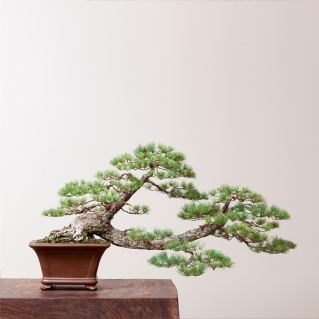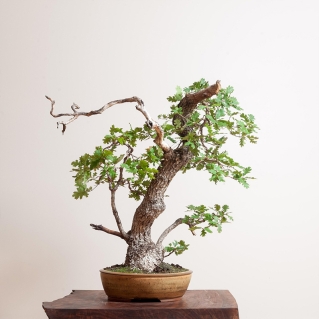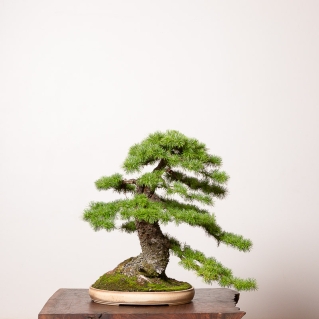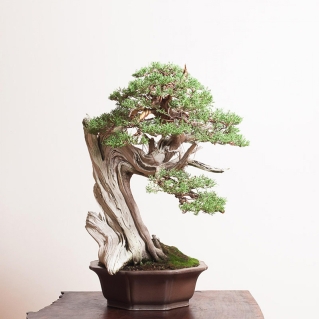White Pine Bonsai
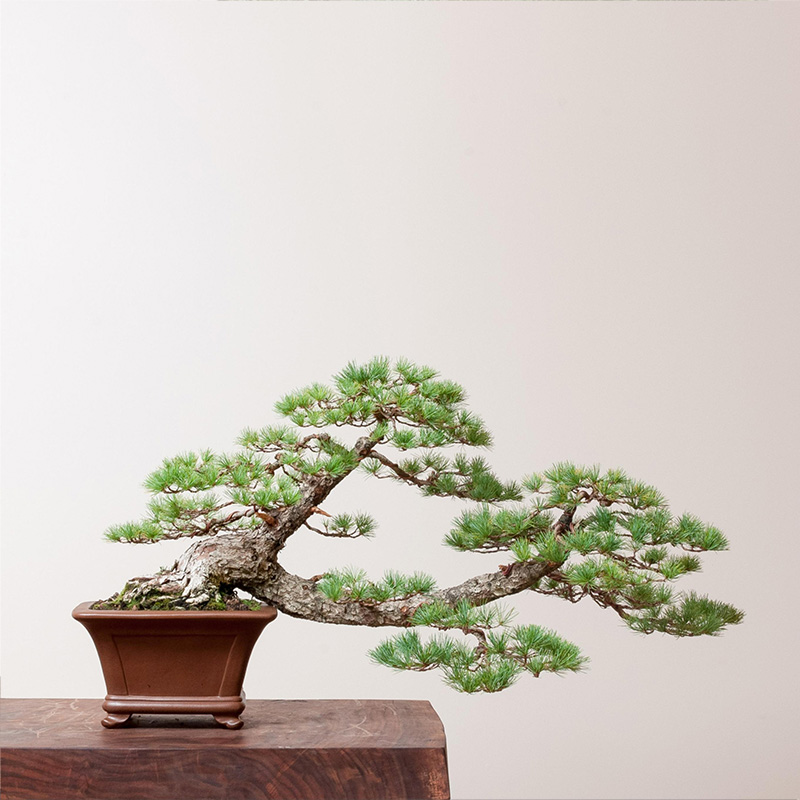
General Information
The beautiful white pine—Pinus parviflora—is commonly known as a five-needle pine. Its name comes from its bluish needles, which have a white stripe that gives them an almost silvery tint.
Japanese white pine’s gray bark is relatively smooth and understated—even in an aged form—with no resemblance to the course, chunky bark of black pines, or the flaky bark of red pines.
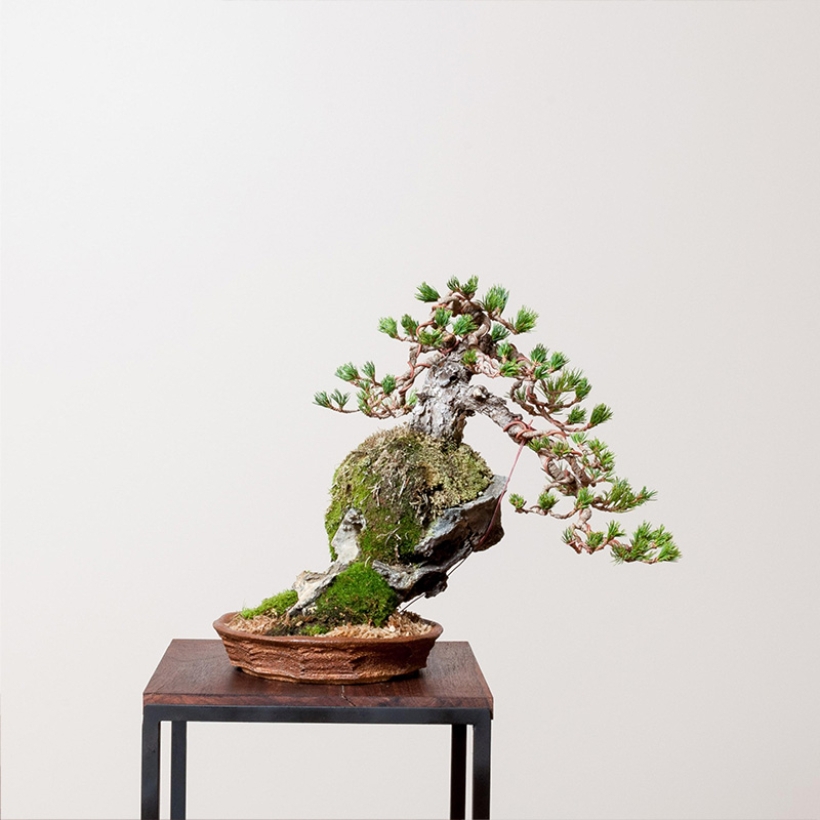
Caring for White Pine Bonsai
Watering
Japanese white pine bonsai are the driest bonsai species, due to the sensitive balance of their need for water and oxygen.
They should be thoroughly saturated at each watering so that the entire containerized environment is hydrated. However, they lean heavily on oxygen, and must be allowed to fully dry out between waterings.
Sun Exposure
White pine bonsai can tolerate tremendous amounts of sun and thrive in several hours of full sun each day. The more light a white pine receives, the shorter and more compact its needles will be.
Elongated, leggy needles on a white pine bonsai indicate the tree needs more sunlight.
Temperature
White pine trees are incredibly durable and fare well in heat and drought.
They can tolerate intense heat, at temperatures of over 100° Fahrenheit, but because they move water so slowly, will need shade protection. In extreme temperatures, a white pine should be put under a 30% shade cloth.
Japanese white pine can tolerate temperatures well below 20° Fahrenheit as long as they are in medium to large size containers of 12 inches or above in diameter and width.
Fertilizing
White pine bonsai require regular fertilization to achieve their best growth and optimal appearance.
Fertilize from early spring to late fall with an organic bonsai fertilizer. Avoid nitrogen-rich fertilizers.
Pruning
White pines may be pruned two times during the year.
For a refined white pine, pruning should occur after the new growth hardens off. By the time this occurs, the sheath that was protecting the needles as they emerged has broken open, dried up and fallen to the ground. This generally happens right around the midpoint of the year. The falling of the sheath is a sign that needle elongation will no longer occur, and the tree is now starting to accumulate energy.
The second-best time for pruning white pine bonsai is in the early fall. During this time, the pine is best adapted to re-accumulate resources, patch the damage from pruning, and have the capacity to move forward and obtain the energy it needs for the coming season.
For the amount of branch reduction, a 50% reduction is safe, whereas a reduction of 60% means you will need to exercise care in watering.
Wiring
Wire white pines from early autumn to early spring, or just after candle pruning in early to mid-summer.
Use the thinnest training wire to hold the branch in the desired position. Never wire a white pine bonsai immediately after repotting.
Repotting
White pine is a long needle, single flush variety of pine. This means it has incredibly low water mobility, low resource production, and must have an abundant amount of oxygen in the soil system.
White pine is best repotted in the spring before the buds begin to move—usually in January or February in most areas of the Northern Hemisphere.
Soil should be an equal (1:1:1) mix of:
● Pumice
● Lava; and
● Akadama.
It is important to remove the finest particles of soil, using only 1/8 to 1/4 inch particles. Particles under this size will hold water, reducing the amount of oxygen in the system.
Propagation
White pine is almost entirely propagated from seed. However, in some instances, desirable needle types of white pine are grafted onto black pine rootstock and cultivated in the field to become larger trees.
Pests/Disease
White pine bonsai are incredibly resistant to disease and pests.
One issue that white pine trees suffer from is wooly adelgid. These aphid-like insects may attack the freshly opening and elongating candles and buds in the early to mid-portion of spring before needles emerge.
The use of an oil or a registered treatment and beneficial organisms that are predatory on adelgid are ways to eradicate the pests without using heavy chemicals.
Aside from wooly adelgid, if your white pine bonsai is presenting any red flags, it likely points to a larger problem existing in the root system.
White Pine Bonsai FAQS
Absolutely. White pine is a high-elevation pine that requires dormancy over winter in order to conserve sugar and starches in its system and perpetuate its health year in and year out.
White pine cultivated in areas that don't provide enough cold over the dormant season will exhaust their sugar starch supply over three to five years, slowly start to lose buds and branches, and eventually perish.
Japanese white pine bonsai are highly sensitive to water quality issues in terms of high pH or hard water with high dissolved mineral content. They love a slightly acidic water source and need a clean water source to maintain favorable color and health.
More than any other pine species, white pine takes a prolonged period for its bark to mature.
Even the mature bark of white pine is very soft and smooth compared to other pine varieties. On average, a white pine takes 30 years before it will begin to produce mature bark. As a result, young white pine bonsai tend to stay incredibly juvenile looking for a prolonged period.
Absolutely not!
Flowering on a white pine is not a sign of ill health, and the flower should not be removed. White pine bonsai trees will flower due to physiological responses from environmental stimuli. White pines may even trigger each other to flower if multiple trees in an area go into flower.
